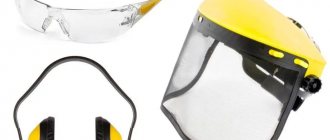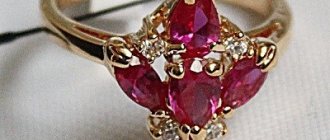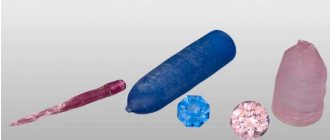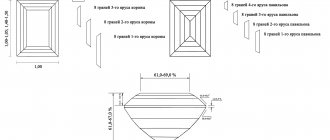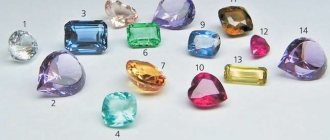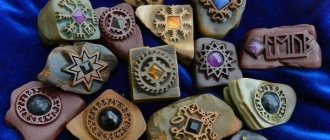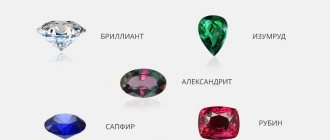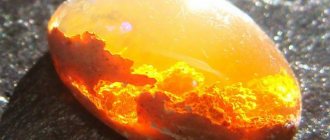Few people can boast that they have a gemologist among their friends. However, it is impossible to imagine any jewelry business today without such an expert. Moreover, if trade in gems is allowed in the country, then there is also a state gemological laboratory. Ordinary buyers do not often turn to this expert, but any gems purchased legally have passed through the hands of a gemologist.
The science of gemstones
The science that studies precious and semi-precious stones, as well as artificial imitations of gems, is called gemology. The name comes from the root gemma, which means “gem, precious stone” and the word “logos”, which translates as “word, science”. The scope of scientific interests of gemology includes the study of the chemical composition of minerals and organic rocks, their structure, physical and optical properties, origin, as well as determining the value and decorative and artistic merits of gems.
Gemology, as a separate branch of knowledge, began to stand out at the end of the 19th century. The need for scientists specializing in valuable types of minerals and rocks of organic origin was caused by the widespread prevalence of high-quality fakes and imitations.
Science as a part of geology intersects with petrography, crystallography and mineralogy, of which it was an offshoot.
Gemology uses methods used both in geology and in chemistry, physics, and biology. An important feature is its applied focus and connection with jewelry and stone-cutting production.
Gemology solves the following problems:
- description of minerals, stones of organic origin and natural inclusions;
- optimization of processing and cutting technologies;
- evaluation of gems and determination of their value;
- determining the type and origin of samples, and developing appropriate effective procedures;
- checking stones for authenticity and identifying synthetic imitations;
- development of methods for refining semi-precious and precious minerals and identifying cases of their use;
- study of methods for obtaining and properties of synthetic stones.
Mineralogy
Mineralogy is a science that studies natural chemical compounds called minerals, namely their properties, composition, structure and conditions of genesis. This is one of the basic geological disciplines.
History of science
Mineralogy is the oldest among geological sciences. It appeared much earlier than geology emerged as an independent scientific field. The first mineralogical observations date back to ancient times. They are first found in the works of Aristotle, where he identified a group of metalloids as metal-like formations and classified minerals into ores and stones. Theophrastus described in practical terms 16 mineral species, dividing them into stones, metals and earths. Later, Pliny the Elder collected all the data on minerals available at that time in four treatises.
Further, mineralogy developed thanks to mining.
In the Middle Ages, the development of geological sciences took place most intensively in Arab countries. One of the outstanding scientists in this field is Biruni. He created descriptions of gemstones using physical parameters such as relative hardness and specific gravity for the first time. At the same time, Ibn Sina classified known minerals into soluble (salts), earths and stones, combustible (sulphurous) minerals, fusible (metals). During this period in Europe, the alchemist Albertus Magnus combined data on minerals.
By the end of the Middle Ages, mineralogical knowledge was very scarce. Many minerals were understood as ores. Due to the lack of chemistry, there was no data on their chemical nature.
In the 16th century V. Biringuccio and G. Agricolla compiled summaries of mineral knowledge. The latter improved Ibn Sina's classification. He also described in detail the diagnostic features and touched upon the genesis of ore deposits.
In the 17th century Danish, Dutch and English scientists laid the foundation for geometric crystallography and crystal optics.
By the 18th century Sweden played a major role in the field of mineralogy thanks to its mining industry. Therefore, a group of mineralogists was formed here, among whom were K. Linnaeus and A. Kronstedt. The first tried to use a double nomenclature for minerals, and the second excluded organisms from the object of study and studied the chemical composition.
At that time, mineralogy was still understood as a scientific discipline with a much broader subject of study than it is now. Thus, in 1636, this term was introduced into literature by Bernard Caesius as a science about all natural fossil bodies. That is, there was a single geological and mineralogical direction of natural science.
It was divided in 1780 by A.G. Wegener on geognosy (general and dynamic geology), oryctognosy (mineralogy and petrography), mining art (mining). Thanks to this, mineralogy acquired a more specific object of study (rocks and fossils were separated from minerals). In addition, new classifications, descriptive methods of study, nomenclature, and training courses have appeared.
In 1783 J.B. Romé de Lisle measured the interhedral angles of crystals of some minerals, R.Zh. Ayui in 1801 created a model of their structure. This, together with the work of W. Wolaston, contributed to the development of crystallography.
V.M. is considered the first Russian mineralogist. Severgina. Continuing the ideas of M.V. Lomonosov, he divided fossil bodies into simple (minerals) and complex (rocks and fossils).
In the 19th century chemical and crystallographic directions of mineralogy arose. Many fundamental concepts have emerged.
In the 20th century, thanks to the doctrine of the rule of phases, physicochemical and experimental directions developed particularly intensively. In addition, the synthesis of various branches of mineralogy began.
From the second half of the 20th century, such areas as organic, bio- and nanomineralogy began to develop.
Modern mineralogy
Currently, this discipline includes several areas.
Descriptive. Characterizes minerals, systematizes and classifies them. Includes two sections: mineral physics (uses solid state physics methods to study crystals) and mineralography (uses specific methods such as microchemical reactions, reflected light optics, etc.).
Genetic. Explores the methods and processes of the genesis and transformation of minerals in natural conditions. Also includes several sections: topomorphism (reveals the relationships between the characteristics of minerals and the conditions of their genesis), thermobaro-geochemistry (studies inclusions in minerals), isotopic studies (determining the source of the substance for mineral formation), triphogenesis (studies methods of nutrition during mineral formation), topogenesis (considers the laws spatial distribution of minerals), paragenetic analysis (identification of laws of sequential spatial and temporal change of parageneses to study the evolution of mineral formation), the study of coexisting minerals (using them as geobarometers and geothermometers), energy and thermodynamic calculations (assessment of the acid-base properties of mineral phases), ontogenetic and crystal morphological analysis (clarification of the history and mechanism of mineral genesis).
Experimental. He is engaged in modeling natural mineral formation and the environment of mineral formation. Includes their refinement and synthesis as a separate section.
Regional. Explores individual territories such as ore deposits, geological provinces, economic-geographical regions in order to clarify the laws of the spatial distribution of associations and minerals.
Topominerology. Considers the laws of their formation and distribution in geological systems.
Mineralogy of cosmic bodies. Explores mineralogical questions for planets, meteorites and the moon.
Astromineralogy. A promising direction that combines mineralogy, astronomy, and physics. Studies the mineral composition and minerals of meteors, asteroids and other cosmic bodies, the circumstellar environment.
Applied. Includes three sections: prospecting mineralogy (dealt with the clarification of prospecting and exploration criteria, improving prospecting and evaluation methods, developing the scientific basis for combining mineralogical, geochemical and geophysical prospecting methods in order to increase the efficiency of geological exploration), technological (aimed at increasing the completeness and complexity of the use of mineral raw materials by mineralogical and mineralogical-technological mapping of deposits and ore fields, technological forecasting, stabilization and planning of ore mining, studying the technological characteristics of minerals, developing methods for their directed change, monitoring the composition of concentrates), new types of raw materials (reveals the characteristics of unused minerals and possible areas of their application ).
List of minerals
If you show all known minerals in one list, you will get a lot of names for one page.
Subject, tasks, methods
The objects of study of mineralogy are individuals, aggregates and their associations.
Objectives of mineralogy:
- creation of a classification of minerals;
- establishing relationships between variations in their structure, composition, properties and conditions of formation;
- development of scientific foundations for the search and exploration of mineral deposits;
- improving processing technologies and using new types of raw materials;
- development of methods for refining and creating minerals.
In mineralogy, field and laboratory methods of determination and analysis are used. In addition, thermal, radiographic, optical, as well as various precision physical, isotopic, thermobarogeochemical methods, and quantitative phase analysis are used.
Education
In universities, mineralogy is not presented as a separate specialty. Training in this profession is most often carried out within the specialty of applied geology or applied geochemistry. They involve the study of general geology, the fundamentals of cartography and geodesy, mathematical modeling methods in geology, safety of geological exploration, engineering graphics, general chemistry, many specialization disciplines, etc.
Laboratory work and field minelogical practices are provided. In addition to the mineralogist, training provides such professions as geologist, geochemist, geocryologist, hydroecologist, topographer, hydrogeologist, surveyor, ecologist, petrologist, paleontologist.
In the “classic form” it is not particularly in demand. Most specialists work in the scientific or educational fields. Therefore, the above-mentioned universal specialties are advantageous in that they provide the opportunity to work in several professions.
Who is a gemologist
A gemologist is a specialist in semi-precious and precious stones - a rare profession with a narrow focus of interests. An expert can determine by eye the type of gem, its place of origin, and also distinguish it from most artificial analogues. His responsibilities and professional responsibilities include the following:
- sorting precious stones and distributing them into groups;
- registration of descriptions of incoming material;
- selection of suitable sets of gems that will be combined into one decoration;
- price analysis and calculation of product costs, as well as filling out accompanying documentation;
- selection of gems for jewelry repair;
- checking the cost and properties of stones for compliance with accompanying documents;
- working with suppliers - placing orders and tracking them;
- issuance of expert opinions.
To work, a gemologist must be able to handle a number of optical and measuring instruments:
- A magnifying glass is a tool that is always at hand for a gemologist to quickly assess the basic properties of a sample.
- Microscope - used to study the structure of stones and natural inclusions under different lighting conditions. Modern models equipped with a digital camera take high-quality photographs.
- A spectrometer is the main device for determining the authenticity of gems, their identification and diagnostics of refined diamonds.
- A refractometer is a basic tool for examining colored stones, allowing the identification of variety by examining the refractive index unique to each type.
General information
Gemologist is a profession in demand around the world. This specialist finds out the type of stone just by looking at it. He easily determines the location of a gem, studies its features, and examines its chemical composition and properties. He also evaluates the quality of jewelry. A professional in his field knows various methods of refining and cutting stones. In his work he uses microscopes, magnifying glasses, and spectroscopes. But his main tool is his eyes. The work is complex, but quite interesting, it is suitable for people interested in world artistic culture, geography and jewelry.
A gemologist must have acute vision and normal color perception. He also cannot do without perseverance and concentration. After all, for a comprehensive analysis you will need to spend a lot of time even with one small stone.
Profession requirements
If we talk about what the responsibilities of a gemologist are, we can highlight the following points:
- the master sorts the stones before processing them, that is, sorts them according to color, shape and other criteria for the quality of the mineral and the number of defects;
- A gemologist can classify specimens that are identical in most respects into one category and create a set of stones that will be sold;
- if the product requires repair, the gemologist will select a stone that will replace the previous option;
- it is this person who makes the calculations for the pieces that go to production or a jewelry factory, and also evaluates each of them according to their characteristics;
- he accounts for and controls the remaining material left by the jewelers at the factory;
- The gemologist draws up a description of the products that have arrived, proposes a procurement plan to the company and compares the prices of stone mining companies.
There are several differences between a jeweler and a gemologist. Jewelers are directly involved in the production of products: they cut stones, set them, and carry out repairs. And gemologists control the quality of the stone and the jewelers’ work itself. But these two professions are not mutually exclusive, so we often meet representatives of jeweler-gemologists who combine two activities.
Gemologist
The profession of a gemologist is complex and requires certain skills and qualities. Objectively speaking, it is difficult for an ordinary student to get into this field after university, since jewelry making is an industry that is famous for its continuity. Therefore, new people will have to prove their skills for many years before they are entrusted with truly important work.
A representative of the profession must also have the following qualities:
- Good eyesight, since you will have to work with small objects and look into details.
- The perception of color must be complete, since there are many shades of stones and each has subtleties.
- Perseverance and concentration. Almost the whole day you will have to sit in a laboratory or office, looking at stones.
- Responsibility, since the amounts of transactions with stones are large and there should be no errors during verification.
Gemologist is a youth profession because it requires concentration and good perception. And also about 70% of its representatives are women. Perhaps this is due to their perseverance.
Of course, the profession is a little monotonous, so it is better to choose it only when you are really interested in stones, and not in the thirst for making money. Most gemologists have higher education in their specialty. The faculty chosen by future representatives of the profession is geological or mineralogical, followed by career guidance in the fifth year. However, you should know that gemologists graduate with one of two types of diplomas: colored or white. A white diploma is awarded to diamond specialists, and a colored diploma is awarded to specialists in other stones.
But in order to obtain a license, gemologists need to take additional advanced training courses, which include practice. Such courses are expensive and are located in Russia only in large cities.
Responsibilities
A gemologist has quite a few responsibilities, but we will list the main ones:
- A specialist needs to sort stones, taking into account their size, shape and quality.
- Select sets of gems.
- Select stones for jewelry repair.
- Prepare invoices for movement.
- Calculate the cost of products that come into production.
- Evaluate gems in finished jewelry.
- Control the remains of jewelry.
- Monitor deadlines and contact suppliers.
- Analyze cost data.
- Make proposals for purchases.
Also, a specialist in this profession prepares gemological descriptions for products that have been received by him.
Pros and cons of the profession
Many educational institutions offer everyone who wishes to take short-term courses in gemology for a wide range of students. They will teach you how to navigate the world of gems and tell you what signs of stones to look for in order to identify a fake. But after such courses you cannot apply for the position of a full-time gemologist.
To become a professional who can find a job in the field related to precious stones, you will need to go to university, study and remember a lot of information. The learning process does not end with receiving a diploma. To gain experience, you will need to complete an internship, attend additional training courses and obtain a license or work as an assistant to a professional.
The main advantage of this profession is its rarity and demand.
However, only recognized experts with extensive experience can count on interesting work and decent pay.
Where do they teach
To become a gemologist, you need to enroll in the Faculty of Geology or Mineralogy and in the fifth year choose the specialization “Gemology” or the corresponding department.
There are gemologists with a colored and a white diploma. The first is given to a gem specialist, the second to a diamond specialist.
- Gemological Center at Moscow State University 119991, Moscow, GSP-1, Leninskie Gory, Main Building of Moscow State University, A-429 Tel.: (495) 939-4973; tel./fax: (495) 932-8894
- MISiS Moscow Institute of Steel and Alloys.
Today, gemological training at the Geological Faculty of Moscow University is carried out at all levels of state higher education (bachelor's, five-year higher education, master's, postgraduate studies), as well as in the form of additional education (vocational training courses).
Russian gemological education is one of the best in the world. The Gemological Center of Moscow State University, which has existed since 1995, has become a recognized educational center in Russia with high authority both in our country and abroad.
Important qualities
To achieve success in the professional field, an expert gemologist, in addition to knowledge, must have the following innate qualities:
- Keen vision , since the eyes are the main tool of a gem specialist. Mostly at work you will have to deal with small objects.
- Good color perception is necessary to distinguish subtleties in the color and shades of stones.
- Perseverance and the ability to concentrate on one task for a long time.
- Attention to detail.
- Responsibility and resistance to stress are necessary qualities for a gemologist, since part of his work consists of filling out documents, expert opinions and conducting transactions for large sums.
Responsibilities
A gemologist has quite a few responsibilities, but we will list the main ones:
- A specialist needs to sort stones, taking into account their size, shape and quality.
- Select sets of gems.
- Select stones for jewelry repair.
- Prepare invoices for movement.
- Calculate the cost of products that come into production.
- Evaluate gems in finished jewelry.
- Control the remains of jewelry.
- Monitor deadlines and contact suppliers.
- Analyze cost data.
- Make proposals for purchases.
Also, a specialist in this profession prepares gemological descriptions for products that have been received by him.
Potential employers
The services of a gemologist are in demand among companies and organizations that work with valuable stones (extracting, processing or selling), carry out expert assessments of gems and identify fakes, or train young experts. A gemologist can find work in the following organizations:
- higher education institutions;
- expert departments at museums;
- international gemstone exchanges;
- public or private gemological laboratories;
- jewelry companies and factories;
- pawnshops.
Building a career
The salary of a gemologist who works without a license will always be low. Therefore, the only opportunity to have more income and build a successful career is to obtain additional education and an appropriate certificate. This can be done at special gemological courses. They are in Moscow, St. Petersburg and Yekaterinburg.
If you decide to improve your qualifications at Moscow State University, prepare to spend 60 thousand rubles for a 1.5-month course. In Yekaterinburg, additional education will cost less. For a two-week course you will have to pay about 20 thousand rubles.
Career growth for a gemologist most often involves moving to work for a larger company. For example, you can start with a small antique shop and rise to become a consultant at world-famous auctions.
What is the science of rocks and minerals called?
Geology (from geo. and. logy), a complex of sciences about the earth's crust and deeper spheres of the Earth; in the narrow sense of the word - the science of the composition, structure, movements and history of the development of the earth's crust and the placement of minerals in it.
Interesting materials:
Where is the longest street in Europe? Where is the most delicious ice cream in the world? Where are the planes in GTA 5 online? Where is the largest nature reserve on earth? Where is the most expensive house in GTA San Andreas? Where is Sargasso? Where is Daria Tsiberkina now? Where is Phil from the Interns now? Where is the painting Black Square now? Where are the treasures from Tutankhamun's tomb now kept?
Salary
The level of remuneration for a specialist is determined by the list of job responsibilities, professional knowledge and skills, and work experience. The salary is low: from 15 thousand rubles in the regions to 35 thousand in the capital, this is tens of times less than the cost of the raw materials with which gemologists work. An expert at the Gemological Center of Moscow State University, Dmitry Sinev, assesses the situation with the salaries of gemologists: “In Russia, the salaries of these specialists reflect the level not of qualifications, but of demand. We have not yet developed enough practice where a gemologist acts as a third party in a transaction between a seller and a buyer. Many people simply don’t know that such specialists exist.”
How is gemological examination carried out at the Moscow Gemological Center?
Gemological examination in the MGC laboratory is carried out in the presence of the client. Laboratory clients are accepted by appointment, during which the client is allocated a certain time in accordance with the amount of work expected.
The examination is carried out on a collegial basis in accordance with the regulations and methodology for carrying out work approved in our organization.
The procedure for conducting examinations is based on the principle “from simple to complex”
First, a preliminary inspection of the product, insert or stone is carried out, then weighing, measurement, and description of the appearance.
Next, tests and determinations are made using the simplest gemological instruments - testers and detectors, and only after that a study is carried out using more complex gemological equipment (optical, spectral and other types).
After a diagnostic study, the qualitative parameters of the gemstone are classified. Moreover, experts carry out all work independently of each other. And only if there is a discrepancy in individual results, additional experts are brought in.
The results of the examination are formalized in accordance with the approved standards of the organization of the STO MGC, which take into account domestic and international practice of conducting diagnostic and classification examinations.
Short story
The profession of gemologist is considered relatively new. It arose quite recently - in the 20th century. In 1908, the world's first specialized institution, the Gemological Committee, appeared in Great Britain. Its creator was the National Association of Jewelers of Great Britain (NAG). It was then transformed into the Gemological Association (Gem-A). In 1928, the first graduates of the institute began working at this institution.
Today, every country with a legal trade in precious stones has public gemological laboratories. In addition to them, of course, there are also private ones - they, as a rule, open in places where diamonds are regularly traded (for example, in regions where international specialized exchanges for the sale of diamonds are established). This allows you to minimize the risks of purchasing counterfeit or low-quality products.
